Shopping Cart
Remove All Your shopping cart is currently empty
Your shopping cart is currently empty
Anti-NRF1 Antibody (7Y254) is a Rabbit antibody targeting NRF1. Anti-NRF1 Antibody (7Y254) can be used in FCM,ICC/IF,IHC,IP,WB.
| Pack Size | Price | USA Warehouse | Global Warehouse | Quantity |
|---|---|---|---|---|
| 50 μL | $298 | 7-10 days | 7-10 days | |
| 100 μL | $497 | 7-10 days | 7-10 days |
| Description | Anti-NRF1 Antibody (7Y254) is a Rabbit antibody targeting NRF1. Anti-NRF1 Antibody (7Y254) can be used in FCM,ICC/IF,IHC,IP,WB. |
| Synonyms | Transcription factor LCR-F1, Transcription factor LCR F1, Transcription factor HBZ17, Transcription factor 11, TCF-11, TCF11, Nuclear factor erythroid derived 2 like 1, Nuclear factor erythroid 2-related factor 1, Nuclear factor, NRF-1, NFE2-related factor 1, NF-E2-related factor 1, NFE2L1, NF2L1, Locus control region-factor 1, erythroid derived 2 |
| Ig Type | IgG |
| Clone | 7Y254 |
| Reactivity | Human,Mouse,Rat |
| Verified Activity | 1. Western blot analysis of NRF1 on Hela cell (1) and mouse heart tissue (2) lysate using anti-NRF1 antibody at 1/500 dilution. 2. Immunohistochemical analysis of paraffin-embedded rat brain tissue using anti-NRF1 antibody. Counter stained with hematoxylin. 3. Immunohistochemical analysis of paraffin-embedded human tonsil tissue using anti-NRF1 antibody. Counter stained with hematoxylin. 4. Immunohistochemical analysis of paraffin-embedded human thyriod tissue using anti-NRF1 antibody. Counter stained with hematoxylin. 5. Immunohistochemical analysis of paraffin-embedded mouse colon tissue using anti-NRF1 antibody. Counter stained with hematoxylin. 6. ICC staining NRF1 in Hela cells (green). The nuclear counter stain is DAPI (blue). Cells were fixed in paraformaldehyde, permeabilised with 0.25% Triton X100/PBS. 7. ICC staining NRF1 in MCF-7 cells (green). The nuclear counter stain is DAPI (blue). Cells were fixed in paraformaldehyde, permeabilised with 0.25% Triton X100/PBS. 8. ICC staining NRF1 in SH-SY5Y cells (green). The nuclear counter stain is DAPI (blue). Cells were fixed in paraformaldehyde, permeabilised with 0.25% Triton X100/PBS. 9. Flow cytometric analysis of 293T cells with NRF1 antibody at 1/100 dilution (red) compared with an unlabelled control (cells without incubation with primary antibody; black).  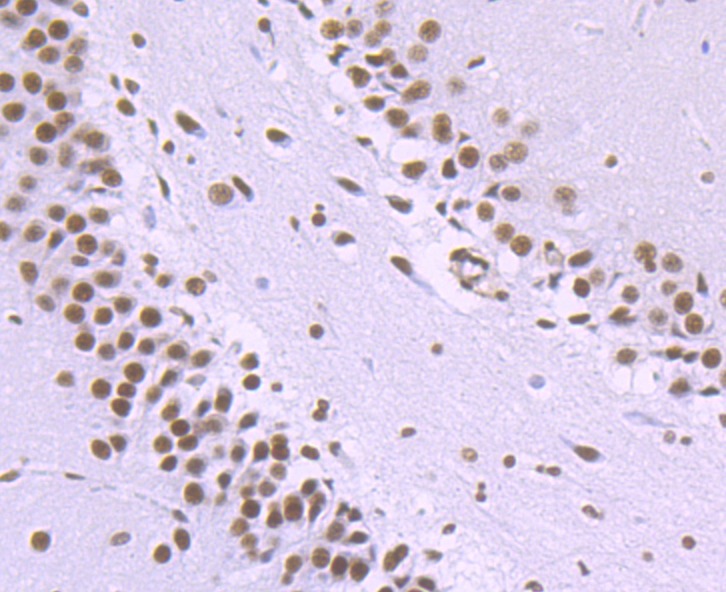 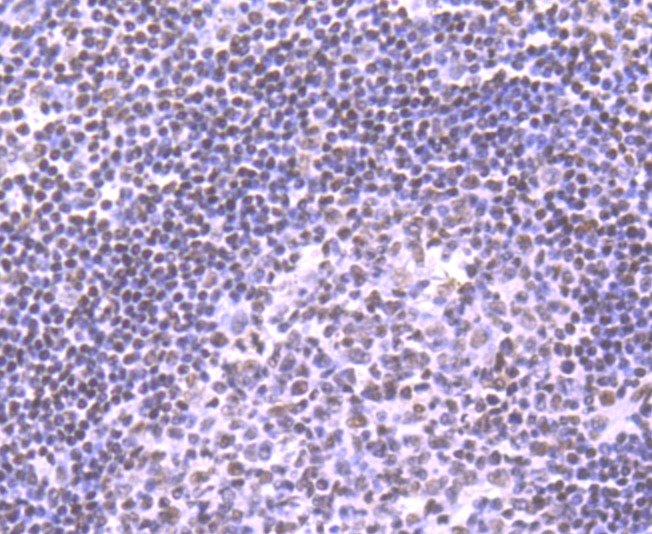 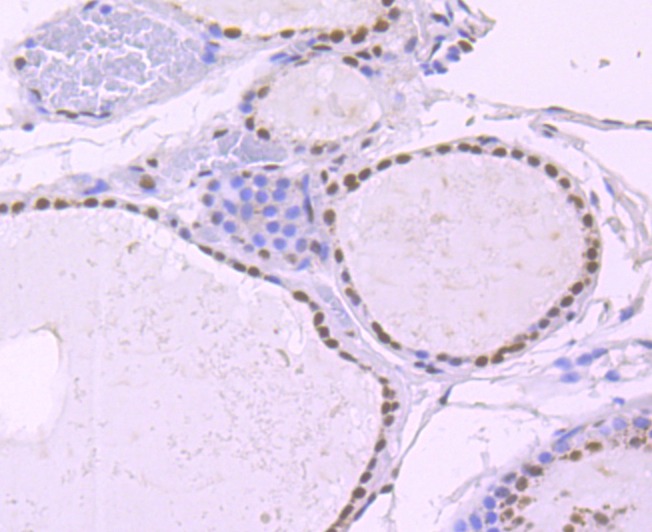 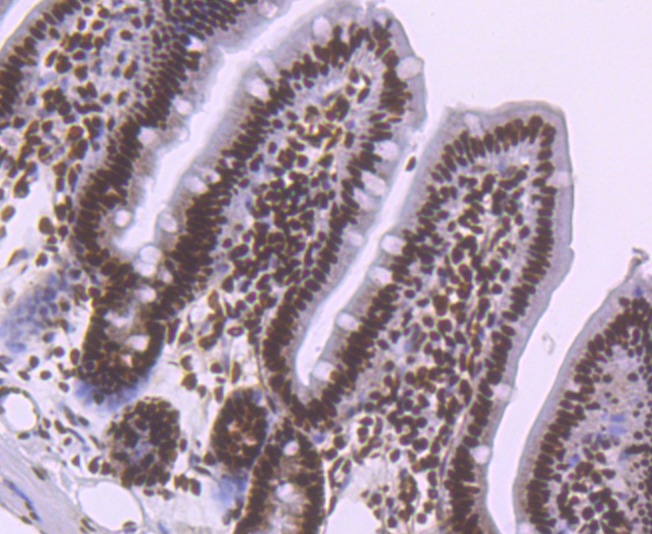 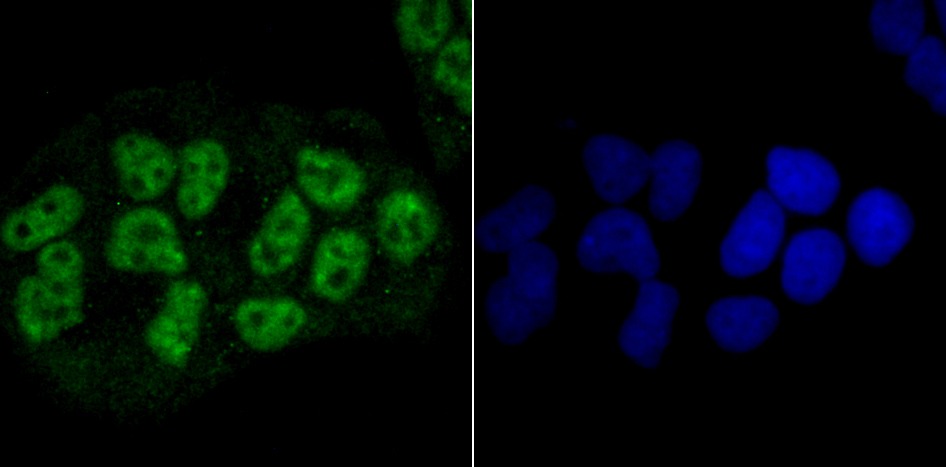  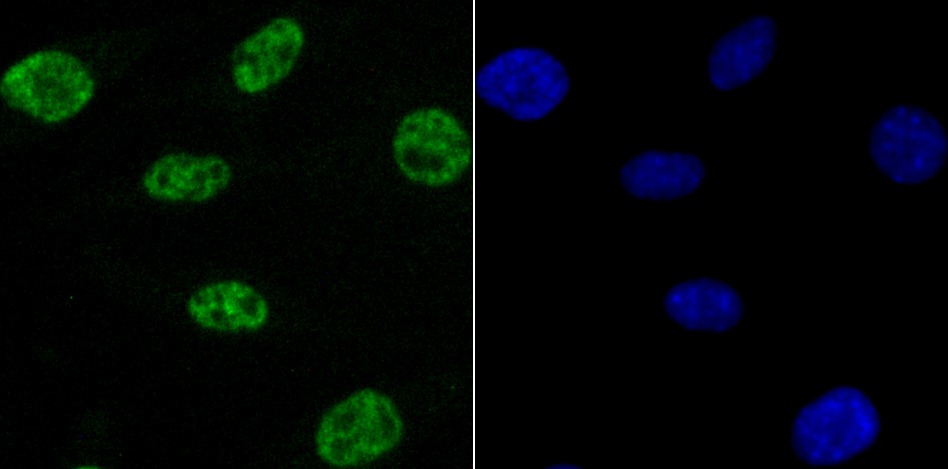 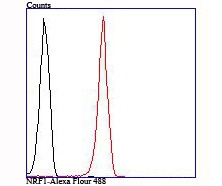 |
| Application | |
| Recommended Dose | WB: 1:500; IHC: 1:50-200; ICC/IF: 1:50-200; FCM: 1:50-100 |
| Antibody Type | Monoclonal |
| Host Species | Rabbit |
| Construction | Recombinant Antibody |
| Purification | ProA affinity purified |
| Appearance | Liquid |
| Formulation | 1*TBS (pH7.4), 1%BSA, 40%Glycerol. Preservative: 0.05% Sodium Azide. |
| Research Background | The NF-E2 DNA binding protein is composed of two subunits, p45 and MafK, and it regulates expression of globin genes in developing erythroid cells through interaction with Maf recognition elements (MAREs). A family of NF-E2 related proteins, which are collectively known as the Cap 'n' collar (CNC) family and include Nrf1 (also designated TCF11), Nrf2 and Nrf3, are bZIP transcription factors that heterodimerize with Maf proteins to bind MARE sequences. The Nrf proteins also bind the antioxidant response element (ARE) and are implicated in the regulation of detoxification enzymes and the oxidative stress response. They do so by heterodimerizing with Jun family members (c-Jun, JunB and JunD) to activate gene expression, specifically the detoxifying enzyme, NQO1. Nrf2 is widely expressed and is thought to translocate to the nucleus after treatment with xenobiotics and antioxidants, which stimulate its release from a repressor protein Keap1. Nrf3 is highly expressed in placenta, B cells and monocytes. |
| Conjucates | Unconjugated |
| Immunogen | Recombinant Protein |
| Uniprot ID |
| Molecular Weight | Theoretical: 56 (Observed: 65) kDa. |
| Stability & Storage | Store at -20°C or -80°C for 12 months. Avoid repeated freeze-thaw cycles. |
| Transport | Shipping with blue ice. |
| Size | Quantity | Unit Price | Amount | Operation |
|---|

Copyright © 2015-2025 TargetMol Chemicals Inc. All Rights Reserved.